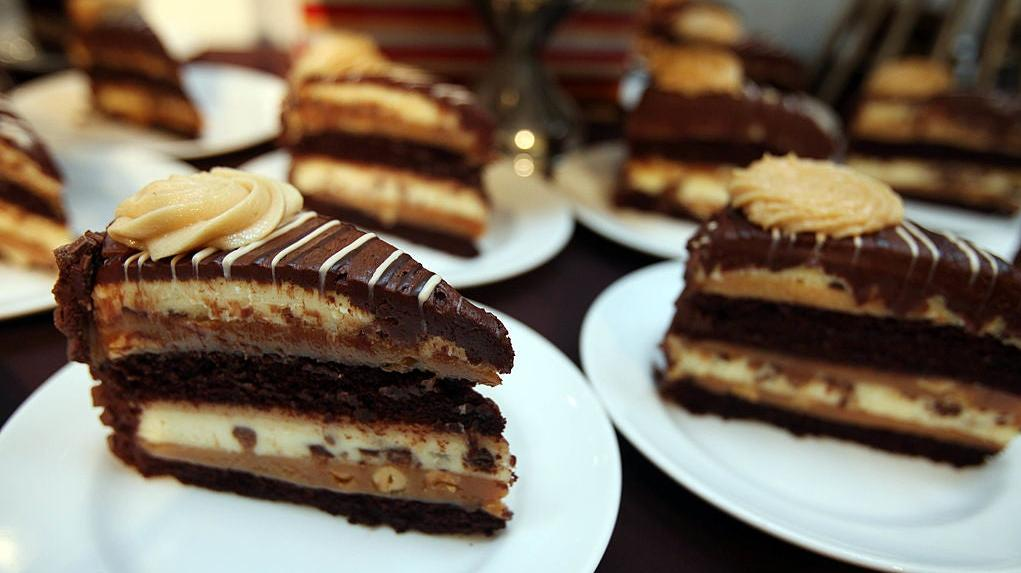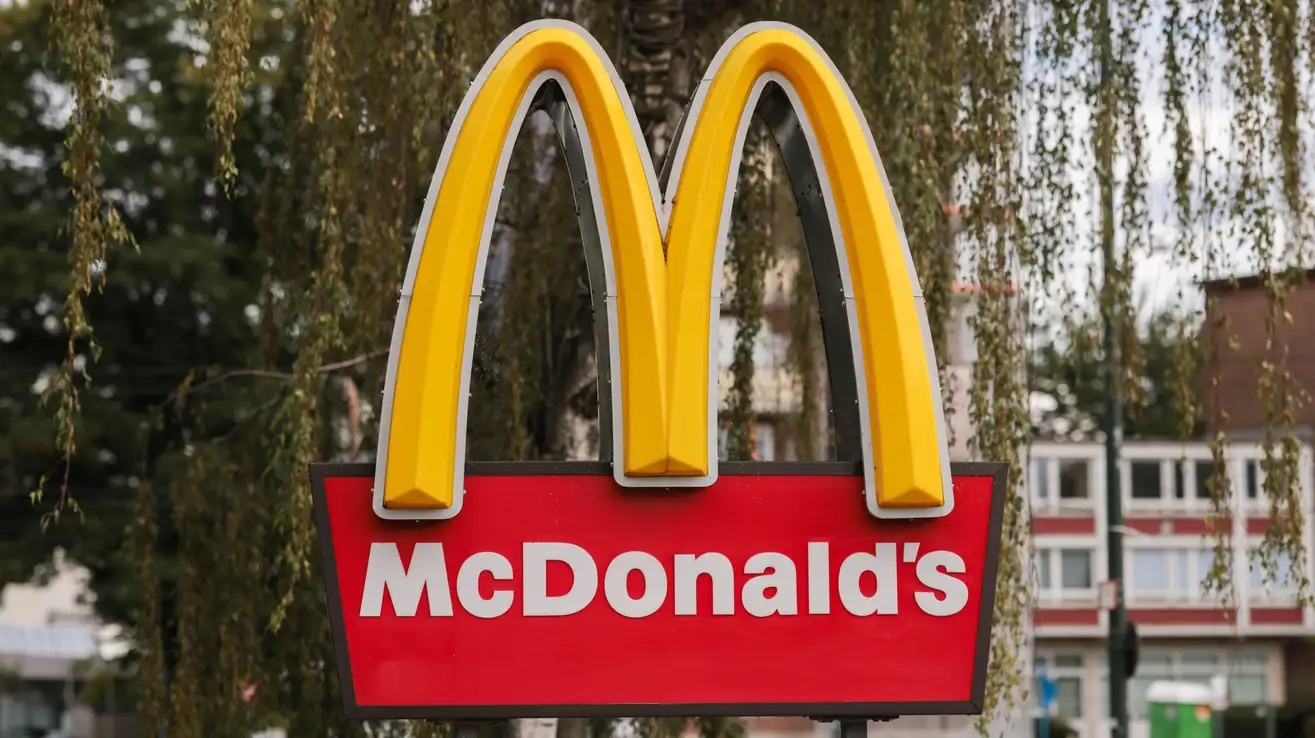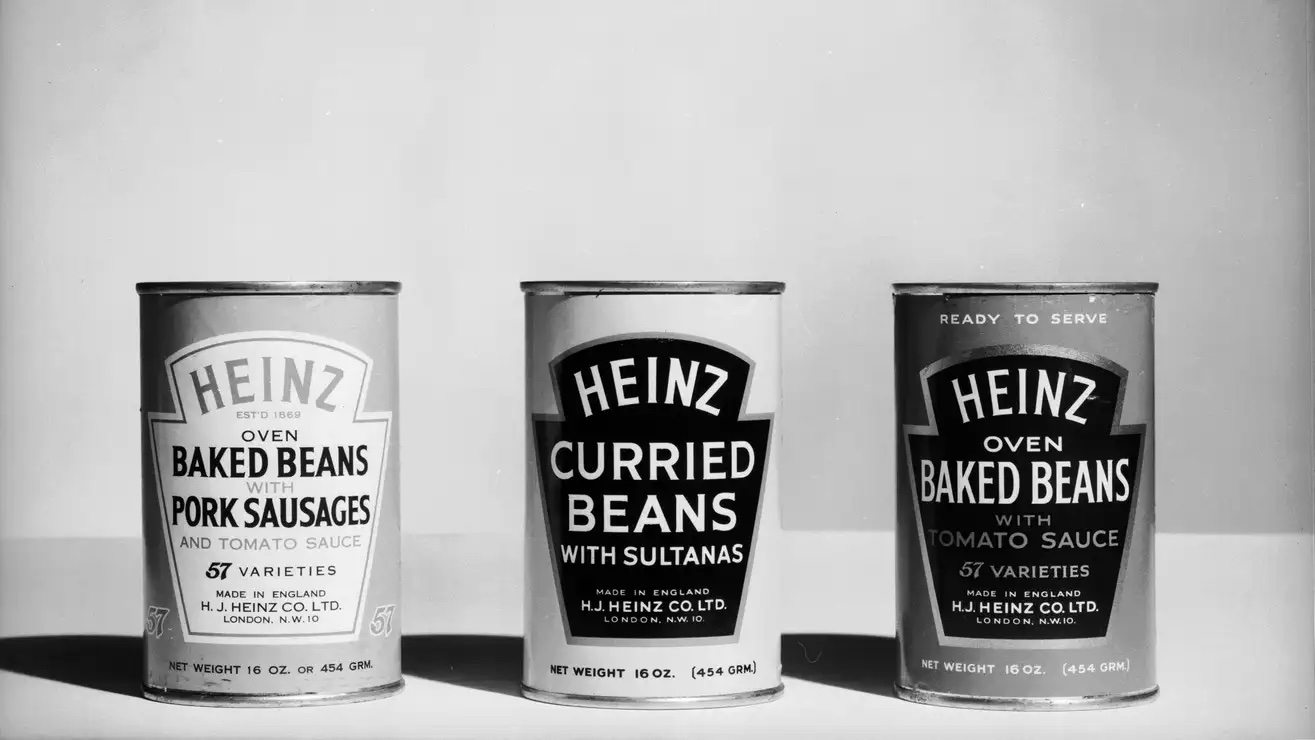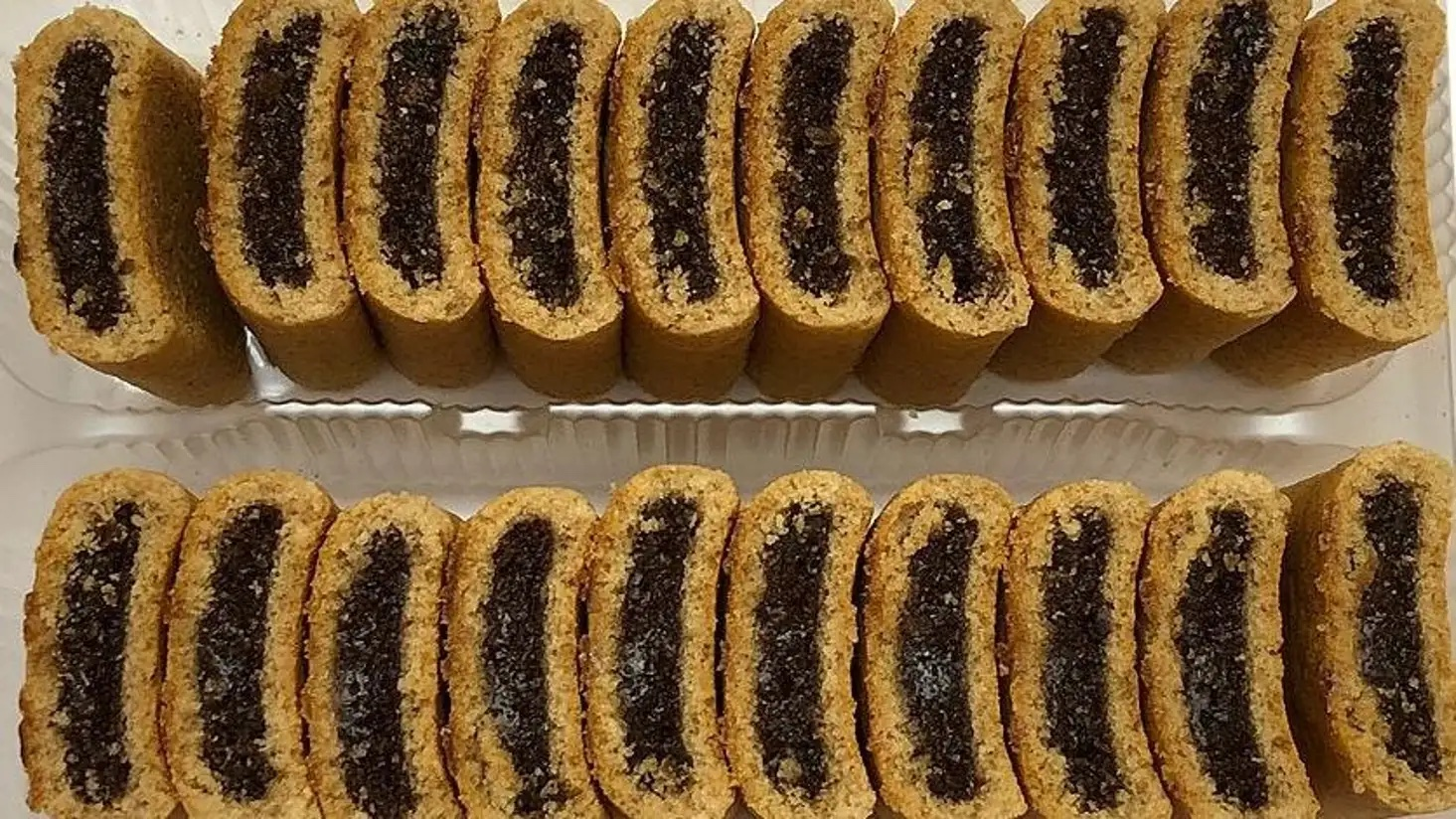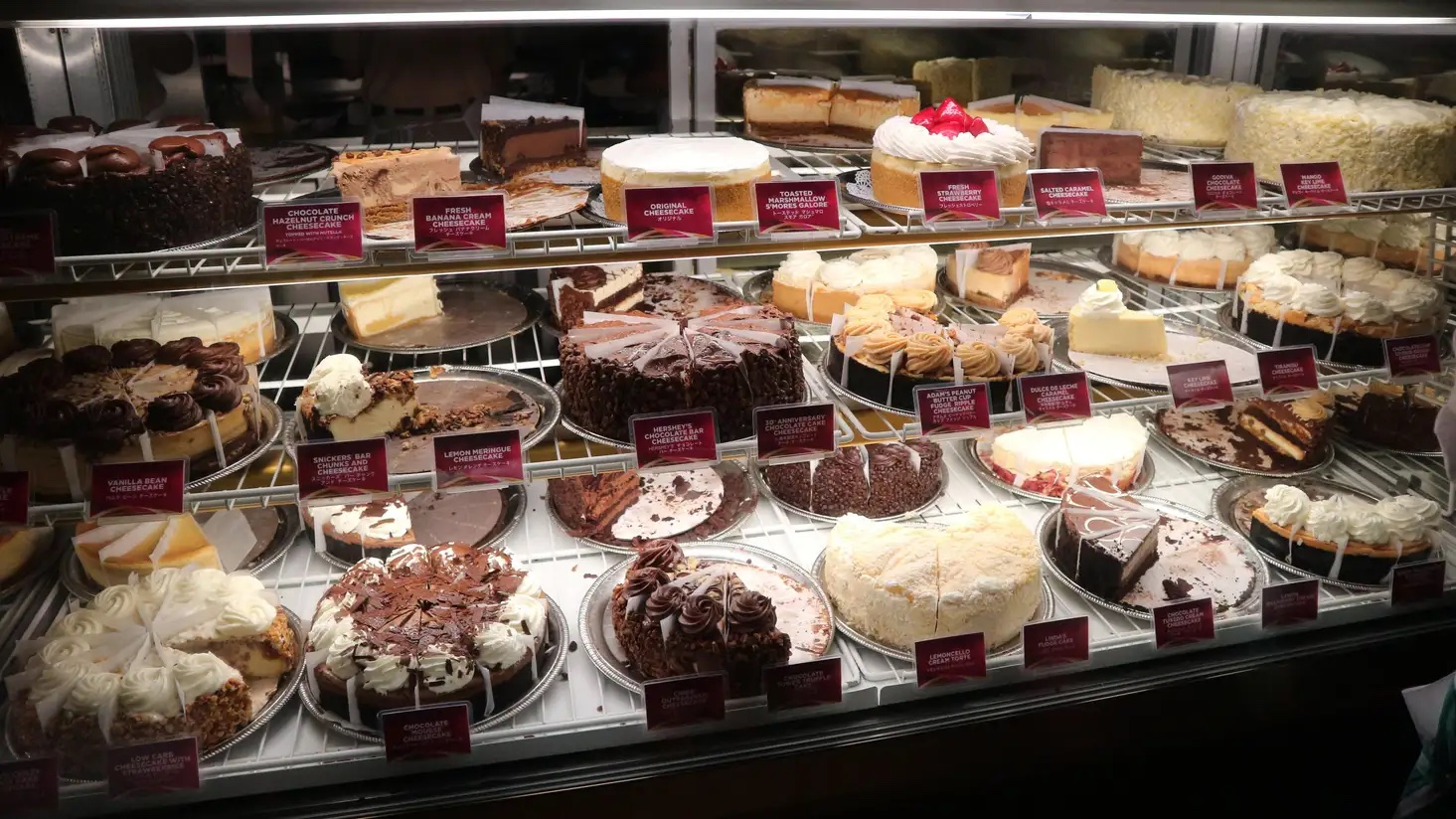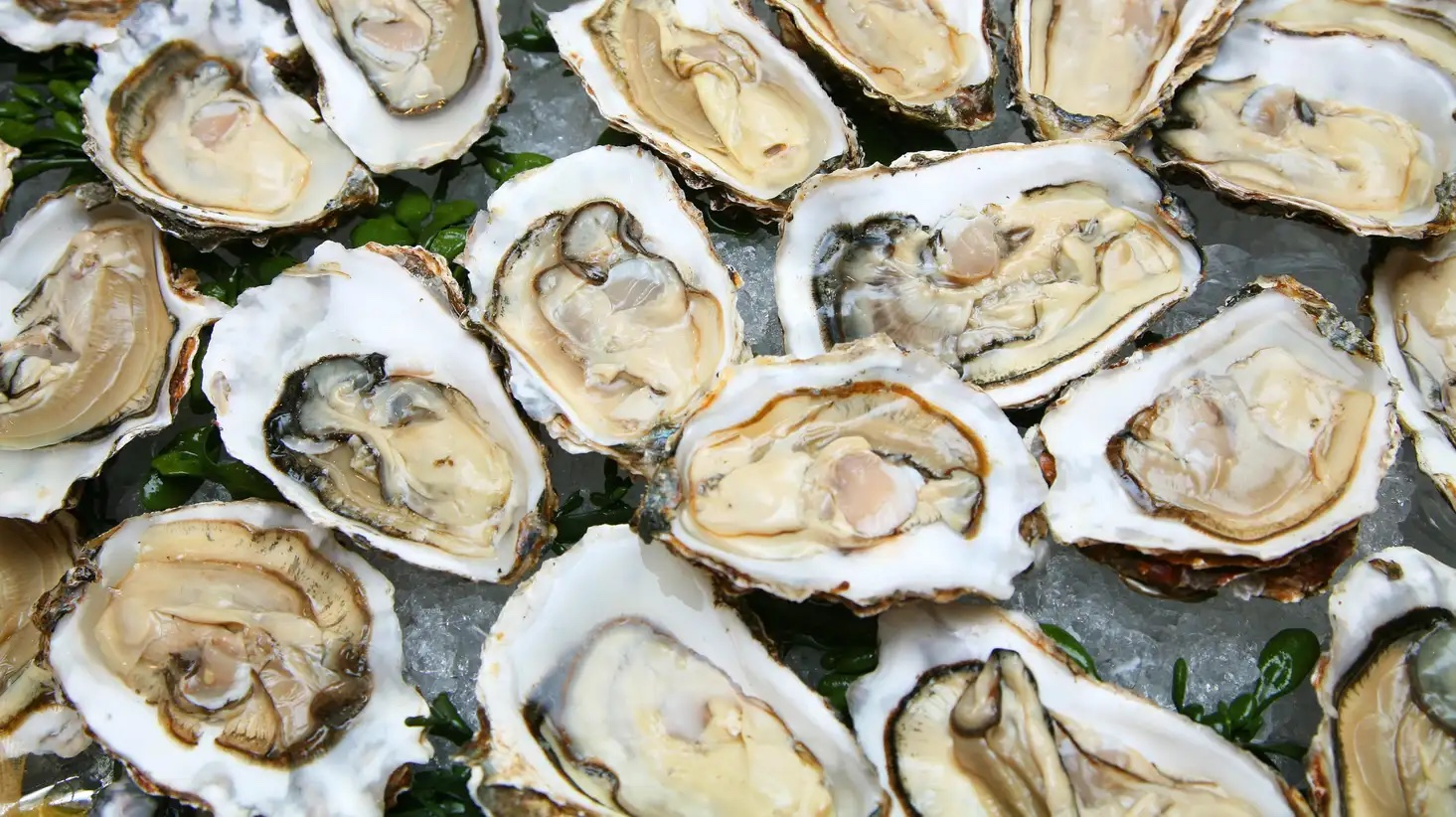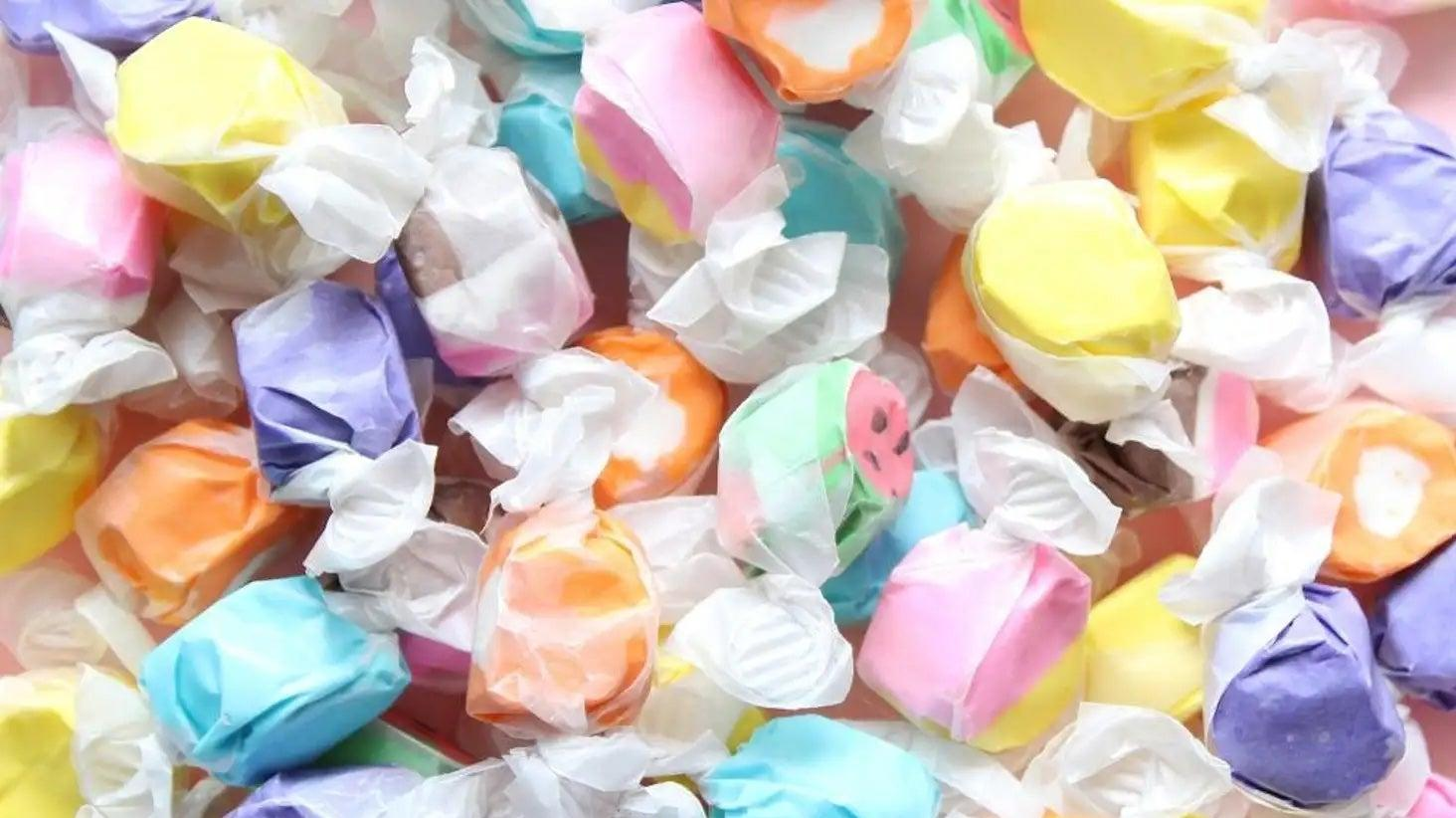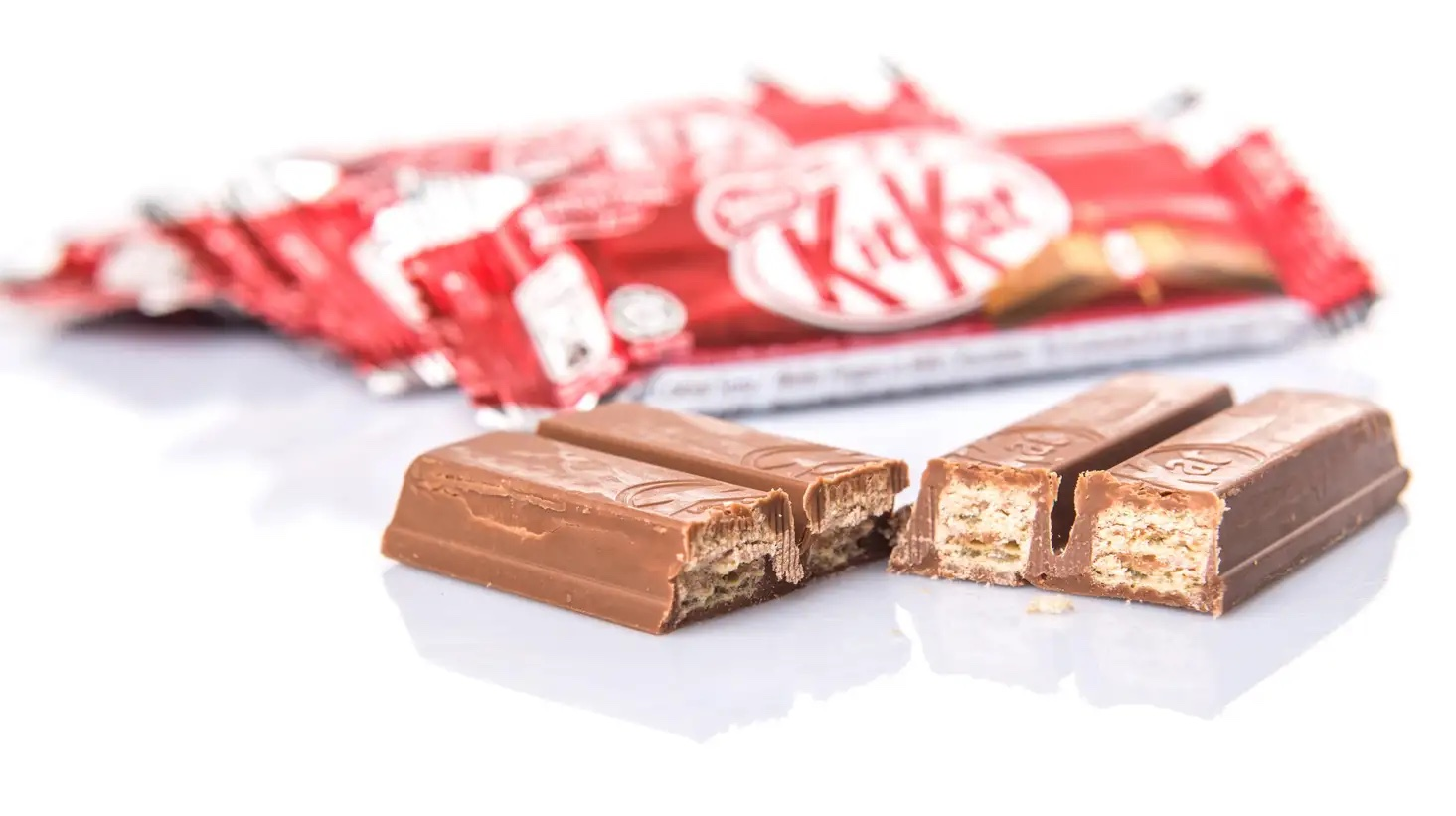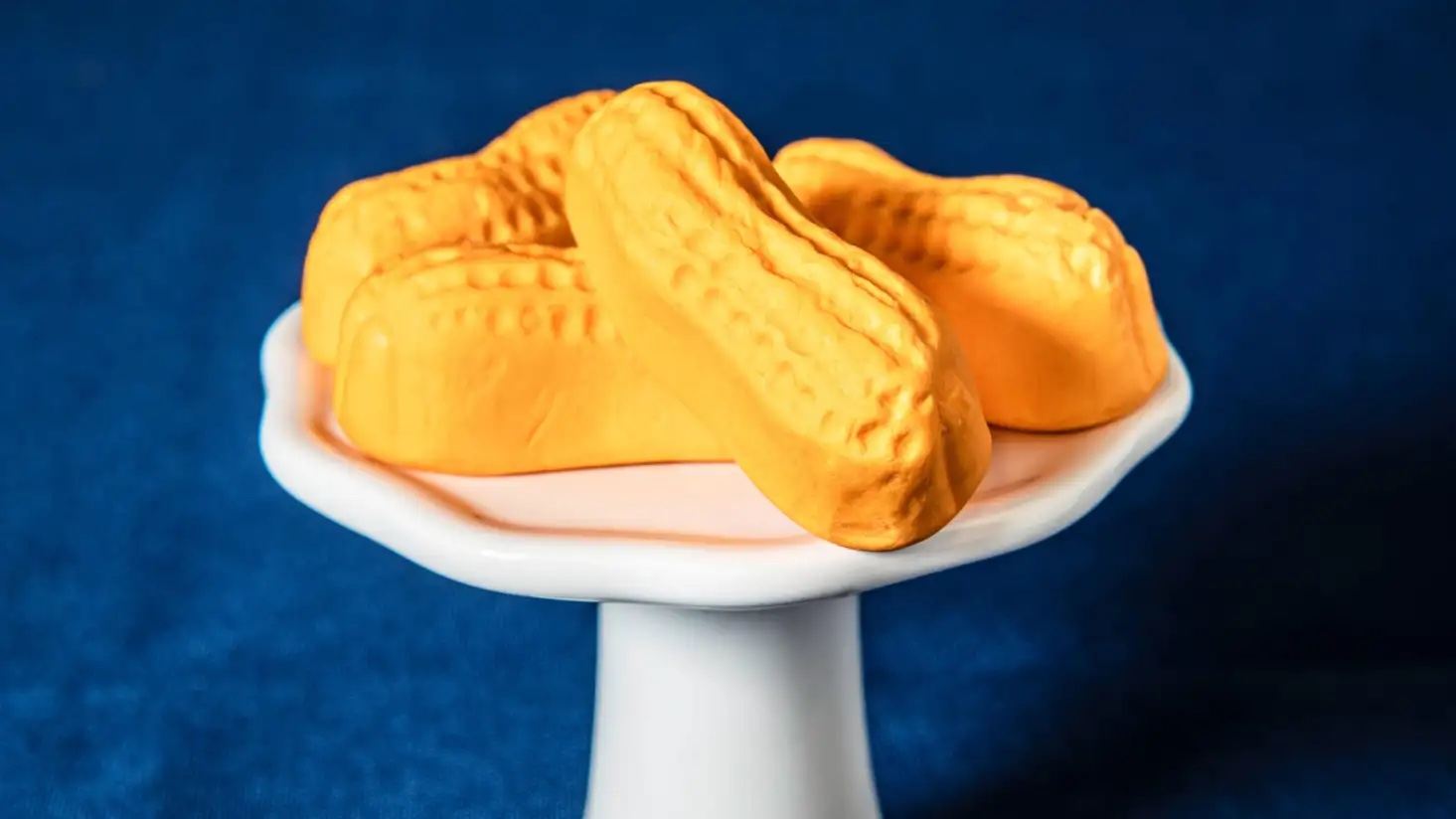21 Mind-Blowing Food Facts You Need To Know
From secret ingredients to royal eating habits, there's a whole hidden world of edible factoids.
We may receive a commission on purchases made from links.
We really do learn something new every day, perhaps even more as journalists—it's our entire job to seek out fresh information and share it with our adoring fans (and the haters who flock to the comment section). There's no shortage of useful tidbits, facts to file away for trivia nights, and endlessly sharable discoveries that we come across on a daily basis. But the ones that stick with us the most are the ones that really blow our minds, changing our entire worldview. Here are some of the wildest things we learned about food in 2022.
There’s always chicken broth on the NFL sidelines
We first noticed the coolers of chicken broth during the Pats/Bills game on January 15. In this video, we see a sideline reporter chugging the stuff—which probably felt great, as temperatures were in the low single digits that day. (As one YouTube commenter pointed out, "dude chicken broth is great its literally drinkable chicken lol." So true, my man.)
Turns out, the NFL has a long history with chicken broth. Deadspin writer Jesse Spector pointed us to the 1979 Cotton Bowl Classic, popularly called the Chicken Soup Game. The game took place in Dallas on the day after a terrible ice storm, and quarterback Joe Montana, who also had the flu, rallied Notre Dame to victory in the second half after eating a bowl of chicken soup at halftime.
Chicken broth is still in rotation today. A few years back, the Indianapolis Colts made headlines for offering broth to keep players warm. On the college side, the Utah Utes are also known for the practice. Warming effects aside, chicken broth packs a pretty serious nutritional punch. It's rich in fatty acids and protein, making it a great candidate for quick-turnaround sideline recovery and electrolyte restoration.
McDonald’s arches are supposed to remind us of boobs
McDonald's thought about getting rid of its golden arches back in the 1960s. When the company considered its rebrand, it consulted with a psychologist named Louis Cheskin. Pulling from Freudian psychology, Cheskin advised McDonald's to keep the big "M" design as it "symbolized a mother's nourishing breasts," reported BBC. Ah yes, come rest your weary head under Mother McDonald's bosom.
Some have misunderstood the story and said that the McDonald's logo was originally designed to look like breasts, but Snopes has debunked this. As weird as the association is, keeping the logo was a smart move on McDonald's part. Our subconscious minds certainly cannot unsee what we have learned.
The Budweiser Clydesdales eat way more than you think
As you might imagine, the Budweiser Clydesdales are carefully monitored by a team of dedicated handlers. That includes a fleet of expert groomers, as well as a team of equine experts who oversee the horses' diet. Per a Budweiser spokesperson, each horse consumes the following on a daily basis:
- Between four and 12 pounds of grain
- Between 30 and 40 pounds of hay
- Up to 30 gallons of water
- A Ford F-250
- A very large white rhinoceros
- The tongue of a blue whale
The spokesperson went on to explain that each traveling team includes 10 horses, while Budweiser owns approximately 150 horses total. That means Budweiser is responsible for providing the following every single day:
It's tough to quantify 6,000 pounds, but a cursory Google search says it's roughly equivalent to:
Per our spokesperson, Budweiser Clydesdale handlers aren't allowed to give the horses outside treats. If you're planning to visit the Clydesdales at an event, leave the apples and sugar cubes at home.
Baked beans are an aphrodisiac
The Brits are telling us to forget everything we know about supposed aphrodisiacs and swap in a common English snack that is allegedly packed with as much of an amorous punch as oysters: canned baked beans. UK-based news outlet Maldon Standard points out that baked beans are high in zinc, the same element that makes oysters and other seafoods an aphrodisiac. It's a nutrient that regulates testosterone levels, which in turn can increase sexual desire. Slurp these babies up on your next romantic date!
The government is stashing billions of pounds of cheese
Deep in the caves of Missouri the U.S. government has stored 1.4 billion pounds of cheese for decades, Deseret News explains. We're not just talking cheddar here, either: The cave has Swiss, American, and many other varieties. This insane reserve of cheese was actually started because of a surplus with the intention of it being used for those in need. Back in the 1970s the U.S. government started buying up cheese to help out farmers, but then farmers actually started producing too much, so the government had to figure out what to do with everything that was left.
The solution came in the form of government food assistance programs that would distribute millions of pounds of dairy products. However, that wasn't enough to deplete the surplus, so then big business got involved. A semi-public marketing board was formed and the government started making deals with fast food companies to sell the cheese and make some cheddar. This marketing board is actually responsible for the creation of the "Got Milk?" campaign that had celebrities sporting milk mustaches and the rest of us chugging back 2%.
Today, the underground of Missouri holds more than just government cheese. According to the website, "Springfield Underground contains 3.2 million square feet of leasable space free from exposure to the outdoor elements." The website also explains that the former limestone mine maintains a constant temperature of 62 degrees and offers refrigerated buildings from negative 20 degrees Fahrenheit to 55 degrees. So, no need to worry about spoiled Swiss.
Some red food dyes contain insects
Consumers panicked when headlines revealed that Starbucks' Strawberry Frappuccinos were dyed with crushed-up bugs. Thus began the frenzy over carmine, a centuries-old red dye used in a number of food products. And, yes, carmine is technically made from insects—but it's easier to avoid than alarmist headlines suggest. And it's actually less harmful than a lot of alternatives.
If you've ever enjoyed processed foods with a pink, purple, or reddish hue, you've probably eaten carmine. It's a popular dye used in foods like popsicles or candy; it's also used in cosmetic products like some lipsticks. The dye gets its vibrant hue from the cochineal insect, a tiny bug that lives on the pads of prickly pear cacti across Peru and the Canary Islands. After being brushed off the cacti, the insects are sun-dried, crushed, and dunked in an acidic alcohol solution. That solution produces carminic acid, the bright red pigment used in carmine dye. So, no, you're not going to find a stray thorax in your red Skittles.
Like any other dye, carmine poses some risk as an allergen. Other than that, it poses no known health risk (unlike other synthetic red dyes such as Red No. 2, which is illegal in the U.S. but abundant in the European Union). In 2011, the Food and Drug Administration required carmine and cochineal extract to be explicitly identified in U.S. ingredient lists. Just check your labels for either carmine, cochineal extract, or "natural red 4." If you don't see those ingredients, you're in the clear.
Queen Elizabeth II didn’t eat pointy foods
According to former royal chef Graham Newbould, the Queen (and the royal family in general) would only eat sandwiches with rounded edges because, "Tradition has it that anyone presenting them with pointed-edged food is trying to overthrow the throne of England." Another theory as to why no pointed edges are allowed on the plates of royals, as reported by My London News, is that Queen Victoria's husband, Prince Albert, thought any "coffin-shaped" food was bad luck.
Fighter pilots suck pizza through a straw
According to the Military Times, U-2 pilots have a workaround to snacking at high altitudes: tube foods. This encompasses anything that can fit through a ⅜-inch-thick straw, including but not limited to pizza, pasta, and apple pie. The military has been doing this since the 1950s, and the system has even been used in space with astronauts (though it's not a typical method for eating in space).
The straw fits into the pilots' pressurized helmets, which, along with their suits, have to stay in place the whole time they're in the air—so no using hands or utensils. The straws are connected to tiny aluminum tubes, and each tube filters food amounting to 150 to 300 calories.
The best and weirdest part of the U-2 pilots' snack habit is that the tube foods still retain the texture of those foods. Originally, the tube foods were simply blended into a paste in order to fit through the straw, but since then, the menu has been tinkered with in order to make the texture more distinctive for the 19 varieties of tube food that exist. Example: apple pie that has bits of crust and beef stew with discernible chunks of meat and vegetables in it.
Pusha T wrote McDonald’s most iconic jingle
After Rapper Pusha T released an Arby's diss track taking a dig against McDonald's Filet-O-Fish sandwich, Rolling Stone revealed a small tidbit of information that feels sort of like a bombshell: Pusha T is responsible for the "I'm Lovin' It" McDonald's jingle from 2003.
Pusha T is half of rap duo Clipse, the other member being his brother, who goes by the name No Malice. The two of them, according to music industry veteran Steve Stoute, were the actual writers of the earworm, despite the fact that Justin Timberlake and Pharrell Williams were widely thought to be the originators of the tune. Things get a little more twisted, though; Pitchfork explained in 2016 that multiple parties lay claim to the song, including some songwriters in Germany.
From Pusha T's account, Clipse was paid around $500,000 for the song, while Timberlake took home $6 million plus royalties. No wonder he jumped at the chance to diss McDonald's on behalf of Arby's.
Fig Newtons aren’t called Fig Newtons anymore
Fig Newtons dropped the "Fig" and changed its name to Newtons... ten years ago. In April 2012. But does anyone actually call them by the shortened name? Is anyone even aware that the name has changed?
It turns out the Newtons brand has had a history of reinventing itself. The cookie was invented in 1891 as "Fig Newtons" and described as a "cake." In the 1980s, that branding changed to "chewy cookies." According to the New York Times story about the name change—which, again, happened ten whole years ago—dropping the "Fig" in favor of "Newtons" reflects not only the fact that the cookie comes in more fruit flavors beyond just fig, but also that figs just aren't all that sexy and marketable.
Cheesecake Factory actually has cheesecake factories
The Cheesecake Factory usually puts out some pretty decent food, despite the fact that its menu is about as long as the dictionary. What's really cool in terms of an execution standpoint is that all of its hundreds of menu items are made from scratch, as mentioned on the website's homepage. All menu items except for one.
And that item is? Yes, the cheesecake. Surprisingly, the namesake dish of the restaurant isn't made in house at all, but is shipped in from bakery facilities (or are they factories?) in Calabasas, California, and Rocky Mount, North Carolina, according to Eat This, Not That. The cheesecakes that are shipped to restaurants arrive frozen and are thawed for service later.
Disney fans lose their minds for popcorn buckets
Fans swear by Disney's theme park food (no matter how strange it gets), and will stand in long lines for rides and experiences. But they'll also queue up for hours for their chance to acquire a popcorn bucket.
At first, these collectible buckets were only available to Disney annual pass holders, but eventually Disney let anyone purchase them. As the years progressed, the buckets took on various novel shapes, designed like all sorts of stuff (Jack Skellington's head, a Mickey Mouse balloon, etc.). The L.A. Times reported that a purple popcorn bucket shaped like a dragon named Figment, a mascot from Disney's "Imagination!" pavilion)], was so highly anticipated that it kept people on their feet waiting in excess of six hours, and now the buckets are selling on eBay for $60-$200. Did you know about this insatiable thirst for buckets?
Spicy food can make you feel high
Feeling "spice drunk" is comparable to experiencing a runner's high: you're invigorated and convinced that you're invincible. Pleasure, in this case, is related to pain. Capsaicin, the compound that creates the burning sensation when you eat certain spicy foods, triggers pain receptors in your mouth. Because your body is experiencing the input as pain, your body releases endorphins, which blocks the nerves from transmitting pain signals to your brain.
In addition to the endorphins, dopamine is also released, which is a chemical associated with pleasure. Taken together, these two reactions can provide a giddy, euphoric feeling. It doesn't totally overshadow the burn of the spicy food, though. There is definitely a point at which the pain can overwhelm any joy conjured from extremely spicy food.
Raw oysters might be alive when we eat them
According to the CDC, eating raw oysters or even undercooked seafood puts the eater at risk for infections like vibriosis, which essentially manifests as a really bad case of food poisoning. The only way to be certain there's no vibrio bacteria in your oysters, clams, or mussels is to cook them properly.
If raw oysters are so dangerous, how are so many restaurants able to serve them? Well, the CDC says that some oysters are treated for safety after being harvested, and those are most likely the ones that will be served raw, but again, the risk for infection is never zero.
The bacteria builds more quickly once the oyster itself is dead, so to combat that excess of bacteria restaurants will serve you raw oysters as fresh as possible, Insider reports. Yes, that means the oyster you're slurping might still be breathing. And this can be true at landlocked restaurants as well, because shellfish can live for up to two weeks without water.
There’s no salt water in saltwater taffy
Sticky though it may be, saltwater taffy is an unmatched seasonal treat that stirs up summertime nostalgia from coast to coast. But it turns out that saltwater taffy doesn't actually contain, uh, salt water. At least, not in the way you might expect.
The recipe for saltwater taffy hasn't changed much, if at all, since it was invented in the late 1800s. Taffy is still made by combining a mixture of sugar, corn syrup, butter, cornstarch, flavoring, and coloring; after cooking, the mixture is cooled and stretched to create a soft, aerated product. The recipe does also call for salt and water—but it doesn't call for seawater as the name might suggest. Turns out that the name "saltwater taffy" originated as a joke.
Britannica explains that the joke began in 1883, when an ocean swell flooded a boardwalk trinket shop. When the shopkeeper discovered the mess, he realized that all of his wares—taffy included—were positively soaked in seawater. Legend has it that a young girl stopped by for some taffy shortly after; at that point, the shopkeeper offered her some "saltwater taffy."
The Beagle Brigade is sniffing out your contraband snacks
In 1984, the United States Department of Agriculture brought on one highly trained beagle to sniff out plants and animal products in luggage on international flights coming into Los Angeles. According to the U.S. Customs and Border Patrol, this particular breed was chosen for the task because of "their keen sense of smell, non-threatening size, high food drive, and gentle disposition with the public." Now there are more than 180 teams of these dogs, known as the Beagle Brigade, at international airports across the country to make sure prohibited food and plant items don't contaminate the country's agriculture.
In the first nine months of the 2022 fiscal year, the Beagle Brigade has detected more than 96,000 prohibited items, The New York Times reports. Bettie the beagle, who works as part of the Brigade at Chicago's O'Hare International Airport, recently uncovered a lemon that a woman was hiding in her bra, Block Club Chicago reports, and in June Bettie sniffed out 30 pounds of sausage that a passenger had hidden inside six diapers in their suitcase. Back in 2016, 11 Alive reported that Joey the beagle found a whole roast pig in the luggage of a passenger flying into Hartsfield-Jackson Atlanta International Airport from Peru. And in 2019, The Washington Post reported that one bag, which aroused the suspicions of Phillip the beagle at Dulles International Airport, was found to contain a mummified llama fetus.
McDonald’s Big Mac sauce isn’t what it seems
We always thought the special sauce on a McDonald's Big Mac was just thousand island dressing. But former McDonald's corporate chef and social media personality Mike Haracz has revealed a big secret about the sauce by divulging his copycat recipe on TikTok.
One big detail he notes in the video is that this condiment has no ketchup in it. Instead, the mayo-based sauce gets its tangy qualities from a combination of Düsseldorf mustard and white wine vinegar. That pink hue isn't from ketchup; it's just a small dose of paprika, which acts as a coloring agent in addition to lending a flavor boost.
Some people cook with cannabis purely for the flavor
In Thailand, where weed was recently decriminalized this past June, traditional recipes including cannabis leaves and roots are coming back into favor, and Whetstone Magazine has a fascinating piece about how cannabis is returning to Thai cooking. The portions of the plant that are used for culinary purposes are not the buds, but actually the leaves and the roots.
The leaves and roots contain glutamic acid, a compound that adds an MSG-like umami flavor to any dish. So savory meals containing cannabis leaves gain a natural flavor boost. The leaves were once used primarily in dishes like curries and stir fries as a seasoning agent—"as common as garlic or basil," Whetsone notes—but of course, since weed's been newly decriminalized, it's in plenty of dishes beyond curries and other traditional dishes.
Thai pizza chain The Pizza Company (sort of like the Pizza Hut of Thailand) once offered a pizza with a cannabis leaf on it, though as NPR reports, it wouldn't have gotten you high. While there's still THC (the compound that gets you high) present in the leaves and roots of the plant, cannabis enthusiast site Canna Connection says that you'd have to ingest a lot of leaves to get intoxicated.
The filling inside of Kit Kats is more Kit Kats
The New York Post explains that Kit Kat revealed the secret of its filling back in 2015 during an episode of Inside the Factory, a TV show that aired on BBC. During the candy manufacturing process, it was explained, mistakes inevitably happen, some of which result in irregular, malformed, or otherwise funny-looking Kit Kats that can't be packaged up and sold. An employee is tasked with picking out the oddballs.
The damaged Kit Kats go through a process called rework, which means the candy is eventually combined with cocoa liquor and sugar to form the paste that glues the wafer cookies together inside each Kit Kat. Thus, Kit Kat filling is made of broken Kit Kats.
Joyce Tan, head of marketing for Nestlé Australia's confectionery division, confirmed this fun fact to the media. The imperfect bars are mixed with other ingredients and turned into a praline (the term for a confectionary spread that usually contains nuts, although there's no nuts in Kit Kats). This is what you see thinly spread between those wafers, if you ever stop and look at a Kit Kat's cross-section before devouring it.
Deli meat causes 90% of listeria cases in grocery stores
A recent study from the International Journal of Food Microbiology found that over 90% of listeria cases come from deli meat, with ready-to-eat salads the second most prevalent source, at about 5%.
Prepackaged deli meat is less likely to carry listeria bacteria, but at a deli where meat is sliced on premises, listeria is much more likely to spread. That's because more elements are involved in on-site prep: If one item is contaminated, anything that comes into contact with a surface that it has touched—cutting boards, deli slicers, hands, utensils—can easily spread the bacteria to other foods.
The listeria bacteria can continue to multiply in refrigerated environments as well, which is why the CDC recommends you consume your deli meat within three to five days after purchasing it. The CDC says that around 1,600 people become sick from listeria every year, with 260 fatalities. Those who are most susceptible to an infection are pregnant people, babies, the elderly, and those with weakened immune systems.
Without circus peanuts, there would be no Lucky Charms
Circus peanuts are easily one of the most divisive candies. The dry, foamy, banana-flavored candy seems to get people more riled up than other foods in existence. But they were the partial inspiration for one of the most popular breakfast cereals in America: Lucky Charms.
As product developer John Holahan was brainstorming the new breakfast cereal, he used Cheerios as the base to form his ideas, then chopped up some circus peanuts and tossed those in too. The prototype eventually became the magically delicious product we know today. Knowing this, will you still bad-mouth circus peanuts next Halloween?
